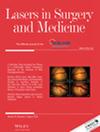A Retrospective Study of Picosecond Alexandrite Laser Treatment for Acquired Bilateral Nevus of Ota-Like Macules in Children
Abstract
Background
Picosecond lasers have been increasingly applied to the treatment of acquired bilateral nevus of Ota-like macules (ABNOMs), and proved safe and effective for adult patients. But there has been limited data concerned with their use in children.
Objective
To analyze the efficacy, safety, and correlative influencing factors of a 755 nm picosecond alexandrite laser in treating ABNOMs in children.
Methods
We retrospectively analyzed children with ABNOMs from January 2017 to July 2023 who received the treatment using a 755 nm picosecond alexandrite laser. Treatment parameters used were as follows: 750 ps pulse duration, 2.34–4.07 J/cm² fluence, and 2.5–3.3 mm spot size. The mean treatment interval was 7 months. The efficacy was evaluated based on a five-point scale according to the percentage of pigmentation clearance.
Results
A total of 49 pediatric patients were included in this retrospective study. The average age at the beginning of treatment was 16.87 months old (range of 4 months to 59 months). These patients received an average of two treatments, achieving an average of 76% pigment clearance, which corresponded to excellent improvement (75%–94%). After the first treatment, six cases reached clinical clearance, and an average of pigment clearance was 61%. The initial efficacy was positively correlated with Fitzpatrick type (p < 0.05). Patients with Fitzpatrick III skin type responded better than patients with Fitzpatrick IV skin type. Besides, the initial efficacy was negatively correlated with the first treatment age and disease duration (p < 0.05). Eight cases developed postinflammatory hyperpigmentation, accounting for 16.3% of the cases.
Conclusion
The 755 nm picosecond alexandrite laser is safe and effective in treating ABNOMs in children. Being younger at the initial treatment, having Fitzpatrick III skin type, and experiencing a shorter disease duration are beneficial for initial efficacy.

 求助内容:
求助内容: 应助结果提醒方式:
应助结果提醒方式:


